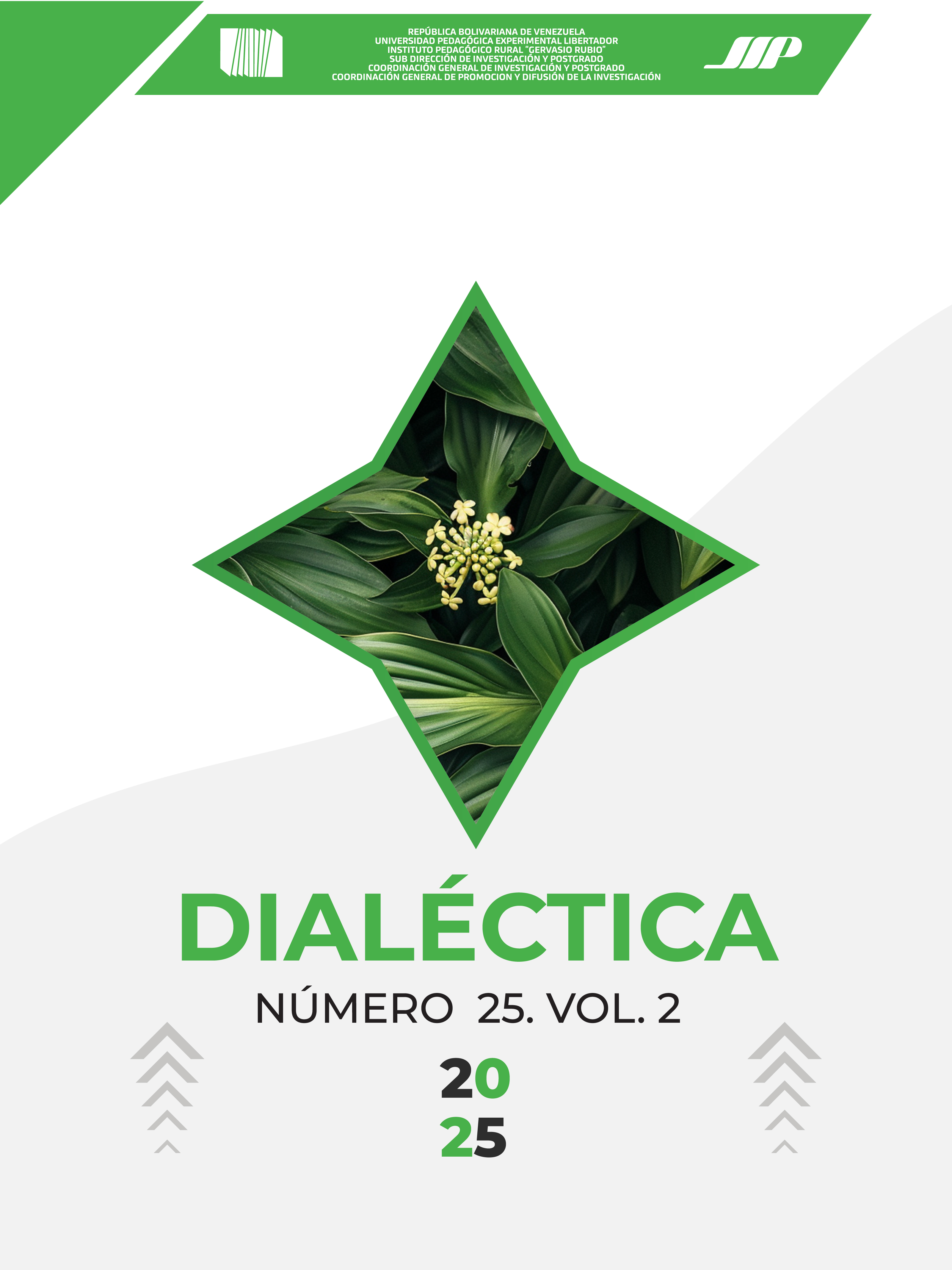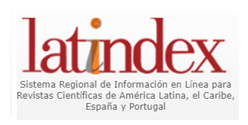PROMOTION OF THE PEACE AND COEXISTENCE AT SCHOOL THROUGH DIGITAL TECHNOLOGIES IN EDUCATIONAL INSTITUTIONS
DOI:
https://doi.org/10.56219/dialctica.v2i25.3974Keywords:
peace education, school coexistence and digital technologiesAbstract
Educational institutions in Colombia have faced a variety of situations, some of which arise from the communities and are brought to the schools by the students, some of which are positive and others that can be improved, such as the consequences of forced displacement, smuggling, and irregularities outside the law, among others. Thus, the intention of the present theoretical approach is framed in: exploring the theoretical foundations to promote the peace and school coexistence chair from digital technologies, in the educational institutions of basic education in Colombia; as bases for an alternative curriculum in the official education. The methodology applied responds to a systematic review of documents that led to this academic essay; in order to provide educational actors with strategies and pedagogical resources that lead to create a climate of peace and school coexistence, managed through digital technologies; in such a way, it was reached the reflection that to ensure in educational institutions a good organizational and academic climate that can be taken to homes and the community in general, thus providing opportunities for development, progress and social welfare.
Downloads
References
Angulo, Coronado & Olivero (2024). Estrategia de Intervención Social para el Mejoramiento de la Convivencia Escolar, Mediante el Diseño de un Aplicativo Móvil en la Escuela Normal Superior de Corozal– Sucre. https://repositorio.cecar.edu.co/handle/cecar/10186
Barcos, E., & Santos, E. (2022). Uso de recursos educativos digitales para mejorar las competencias pedagógicas en la enseñanza de Historia. Episteme Koinonía. Revista Electrónica de Ciencias de la Educación, Humanidades, Artes y Bellas Artes, 5(10), 4-28. https://doi.org/10.35381/e.k.v5i10.1850 DOI: https://doi.org/10.35381/e.k.v5i10.1850
Barragán, D., Pirela, J., Riaño, J., & Munevar, S. (2024). Plataformas digitales y prácticas pedagógicas de docentes: promesas no cumplidas. Edutec, Revista Electrónica De Tecnología Educativa, (87), https://doi.org/10.21556/edutec.2024.87.3067 DOI: https://doi.org/10.21556/edutec.2024.87.3067
Castro, T., González, I., & Álzate, A. (2024). Efectos de la violencia intrafamiliar en el desarrollo psicoafectivo de niños y niñas de 2 a 5 años en el Hogar Comunitario Miguelin de la vereda La Doctora, municipio de Sabaneta. https://repository.uniminuto.edu/bitstream/10656/19395/1/Alzate%20Angela-%20Castro%20Tatiana-%20Gonzalez%20Isabella_2024.pdf
Chaux, E. (2012). Educación, convivencia y agresión escolar. 1era. Edición. EditorialTaurus. DOI: https://doi.org/10.7440/2012.62
Díaz, J., Carbone, G., & Picho, D. (2021). Los sistemas de gestión de aprendizaje (lms) en la educación virtual. CIEG, Revista Arbitrada del Centro de Investigación y Estudios Gerenciales. Nº 50. https://revista.grupocieg.org/wp-content/uploads/2021/06/Ed.5087-95-Diaz-Carbonel-Picho.pdf
Galtung, J. (1996). Peace by peaceful means: Peace and conflict, development and civilization. Sage Publications. DOI: https://doi.org/10.4135/9781446221631
García, L., & Dueñas, F. (2024). Cátedra de la paz: propuesta de implementación a través de Redes Sociales. Revista Internacional de Cultura Visual. Vol. 16, N° 6. https://visualcompublications.es/revVISUAL/article/download/5328/3698/20416 DOI: https://doi.org/10.62161/revvisual.v16.5328
Ley 1732 de 2014. Por la cual se establece la Cátedra de la Paz en todas las instituciones educativas del país. Congreso de la República de Colombia. https://www.suin-juriscol.gov.co/viewDocument.asp?ruta=Leyes/1687408
Najar, O., Pedraza, J., Rodríguez, I., Cuervo, W., Ortiz, M., Prieto, L., Carvajal, M., & Hinestroza, J. (2022). Cultura de Paz con TIC. https://librosaccesoabierto.uptc.edu.co/index.php/editorial-uptc/catalog/book/180
Ortega, R. (2003). La convivencia escolar: qué es y cómo abordarla. https://idus.us.es/items/d91f4daf-a063-43bf-8344-b1cdcd56cde4
Polo, A. (2020). Sociedad De La Información, Sociedad Digital, Sociedad De Control. Inguruak. Revista Vasca De Sociología Y Ciencia Política, n.º 68. https://doi.org/10.18543/inguruak-68-2020-art05 DOI: https://doi.org/10.18543/inguruak-68-2020-art05
Suárez, E., & Jerez, M. (2024). Tecnología, redes sociales y su impacto en la Cultura de Paz. https://enfoquesjuridicos.uv.mx/index.php/letrasjuridicas/article/download/ 2621/4507
Granados, M., Romero, S., Rengifo, R., & García, G. (2020). Tecnología en el proceso educativo: nuevos escenarios. Revista Venezolana de Gerencia, vol. 25, núm. 92. https://www.redalyc.org/journal/290/29065286032/html/
Verdezoto, J., & Sacan, J. (2024). Las Redes Sociales en la Prevención del Bullying en los Niños de Quinto Año de la Unidad Educativa “Las Juntas”. Mundo Recursivo Revista Científica. Vol. 7 Núm. 1. https://www.atlantic.edu.ec/ojs/index.php/mundor/article/view/224
Downloads
Published
How to Cite
Issue
Section
License

This work is licensed under a Creative Commons Attribution-NonCommercial-ShareAlike 4.0 International License.
La revista Dialéctica conserva los derechos patrimoniales (copyright) de las obras publicadas, que favorece y permite la reutilización de los mismos bajo la licencia Creative Commons Atribución-NoComercial-CompartirIgual 4.0 , por lo cual se pueden copiar, usar, difundir, transmitir y exponer públicamente, siempre que se cite la autoría y fuente original de su publicación (revista, editorial, URL y DOI de la obra), no se usen para fines comerciales u onerosos y se mencione la existencia y especificaciones de esta licencia de uso. Si remezcla, transforma o crea a partir del material, debe distribuir su contribución bajo la misma licencia del original.











